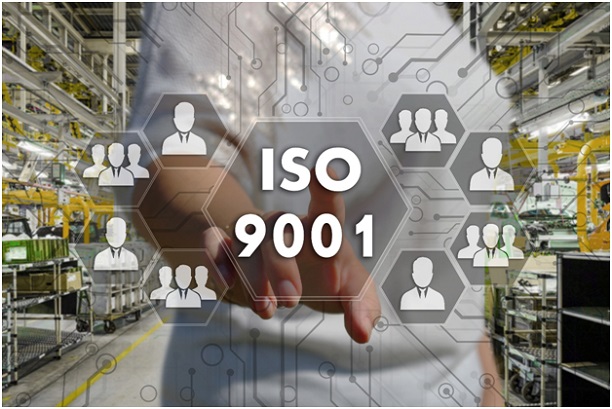The Scope Statement precisely describes your products and/or services, the regulatory requirements, activities, remote locations and facilities supported and documented by the quality management system of your company.
In essence, your scope identifies exactly what your business does.
Make sure your Scope details are fully documented in your QMS. Don’t forget to keep it short and simple. Your customers should be able to read it and understand without a struggle.
Contents
Considering the nature of your business, let the scope for ISO 9001 be evident by the range of controls and processes that have already been established.
Normally, the scope covers the entire organization. But there are exceptions when it comes to companies with multi-location sites such as national and international offices. It can also be limited where a business has two different sides and the QMS (Quality Management System) is only applicable to one of them.

The scope includes the ISO requirements that apply. A justification should be provided for the standards that do not apply. In summary, it covers the physical location of the organization, products and services, and the relevant industries.
There may be yes. The second part of the Scope can be for exclusions; in most cases will identify none. But a common exclusion is the standard for ‘Design & Development’ which applies to such companies as machining shops. Such businesses do not design any product but work exclusively from drawings of their clients.
If you focus on short-term external factors only, you may not be able to reap the long-term benefits of internal motivators such as the quest for higher efficiency and productivity.
Some reasons may be valid but cannot get you the best results if considered alone. Examples of wrong reasons for pursuing ISO 9001 certification include marketing purposes and just because competitors have acquired it.
After determining the right reasons for seeking the certificate, it’s time to seek support from Top Management. This could be the owner of the business, the board of directors, or the CEO.
These people should give insights necessary for Quality Management System for the successful acquisition of the ISO certificate together with its potential benefits.
When leaders demonstrate commitment, it means they are taking accountability for QMS. It is thus imperative that they emphasize the significance of the requirements of ISO 9001. If the Top Management is not involved in the process, the ISO 9001 may not be sustainable in the long-run.
The personnel involved in creating the scope must be conversant with ISO 9001. If they don’t understand the requirements, they could end up making a huge mistake. The key personnel, in this case, are people who are involved in the decision-making process.
In fact, everyone needs training in 1SO certification. The importance of quality and how to achieve it should be properly communicated. The training should match the responsibility and duties of the personnel.
Your scope statement should not be limited to a particular size. However, it is very important that it stays clear and concise.
You need to gather sufficient information which will determine what is covered by the QMS process. But let it be clear in terms of what’s covered and what’s been excluded.
You must stipulate what processes are covered by your QMS. Otherwise, how will the interested parties and the auditor understand the scope?
By making the statement simple and legible, you will be able to focus on your QMS efforts thereby preventing unnecessary activities or questions that do not apply to your ISO 9001 certification.

One of the most important elements of the ISO scope is the description of how processes interact in your organization. To make it easier, use flow charts to identify those processes and how they are interrelated.
Consider a simple top-level flow chat to expound on the basics on the Quality Manual rather than an in-depth flow chat which might confuse people.
You might be wondering, ‘How does the scope apply to your business? Most probably, the ISO scope will cover your organization in its entirety. But if your service is split between two industries, there will be some exemptions.
Another exemption is when your QMS covers a single physical location of your international company and you only want that one location ISO certified.
If all business areas are applicable, be sure to specify which parts are.
(The company names mentioned below are completely fictional. The scope statements are for illustrative purposes only):
Finally, stating you are the best or industry-leading company in the country is not necessary. Save such over-hyped adjectives for marketing materials. When writing the scope, you are only supposed to explain the applicability and boundaries of the management system. You are not trying to make a sale here.
However, do not be scanty. For instance, ‘Machine Shop in Colorado produces precision machines’ would sound better as:
‘Located in Denver, Colorado, Machine Shop is a high-volume producer of precision machines for suspension systems, aluminum brakes, and steering according to OEM standards for automotive applications’.
The latter version is much better because it covers the products, though limited, and specifies one compliance that most clients would be interested in. A good statement addresses all the requirements of the ISO 9001 certification.
It may not be possible to include all the internal and external factors, products and services, all the interested parties, etc. But you should at least try to summarize the major considerations.
Keep in mind that ISO 9001:2015 policy requires you to maintain the scope as documented data. Note again that this information should be accessible to the relevant parties.
Too much documentation (or documented information) is not necessary. You don’t need to record everything your company does as the statement will end up looking like a policy if not a sales pitch.
The key to creating a non-complex document is to start by defining the need for the ISO 9001 scope.
Ask Yourself These Questions After Your First Draft
If not, then you should re-evaluate and revise or ditch the Scope Statement.

Is your business trying to keep the system alive? Perhaps your system is too complex and the process of documenting procedures and filling out forms is not adding any value. How about you simplify the system and keep it practical? The best idea is to focus on improvements and results rather than on the documents.
To come up with a concrete ISO scope takes time. Trying to draft the statement in a short time will be counterproductive.
It is therefore important that your company takes time to plan, write, and revise. This also helps to implement a system that can actually improve your products and services.
The ISO 9001 aims at improving customer satisfaction. That is why you need to know what your customers actually want before writing the scope. This begs the question: Do you take the time to listen to clients? If yes, then you will be in a position to achieve this goal.
You don’t need to take a complex customer survey. You can simply ask a few questions to gather sufficient information to determine the changes that will satisfy this objective.
Without the necessary resources to assure quality, it is more likely that you’ll encounter quality problems. When incompetent personnel is involved in creating the scope, something can go wrong.
Are working spaces and equipment reliable? Does the working environment hinder the process of creating the scope? Does it degrade or promote the products?
Your organization should take time to evaluate the underlying problems and engage the right people in the process. Some problems are recurrent hence applying the corrective action process properly can eliminate redundancy.
In most cases, internal auditors don’t have the right training or experience to differentiate big issues from small ones in the ISO requirements. Auditors must focus on issues that help organizations to improve their systems and processes.
What works for one company may not work for another. Every entity is unique and so must focus on their specific context to develop a proper ISO scope.
The entire organization must be involved in the creation of ISO 9001 scope. Every stakeholder must take ownership of the quality management system for it to work out.
Unless the workers incorporate quality, no outsider would help them to achieve that. That is why training is very necessary for the process to add value to your company.
The scope helps the registrar to determine what areas require auditing. Within the scope, you should state the kind of products and services you offer.
Don’t forget to give a justification for non-applicable requirements.
If you do not design your own products, state this exclusion in the scope. If your company has several facilities, list all the locations that have been included in or excluded from the QMS scope.
If you manufacture toys, the scope should include all the primary functions of producing toys in the specific location of your business as well as the distribution of toys to kids of all ages.
One of the biggest mistakes that companies make is implementing an ISO scope without a valid reason. You cannot just create a bureaucratic statement based on mere compliance or for the sake of creating one.
To understand the process of developing the ISO scope from the beginning to end and what the registrar's are looking for is key to developing a useful and compliant Scope statement.
Updated: 26th February 2022
Author: Richard Keen

Richard is our Compliance Director, responsible for content & product development.
But most importantly he is ISO's biggest fanboy and a true evangelist of the standards.
Learn more about Richard